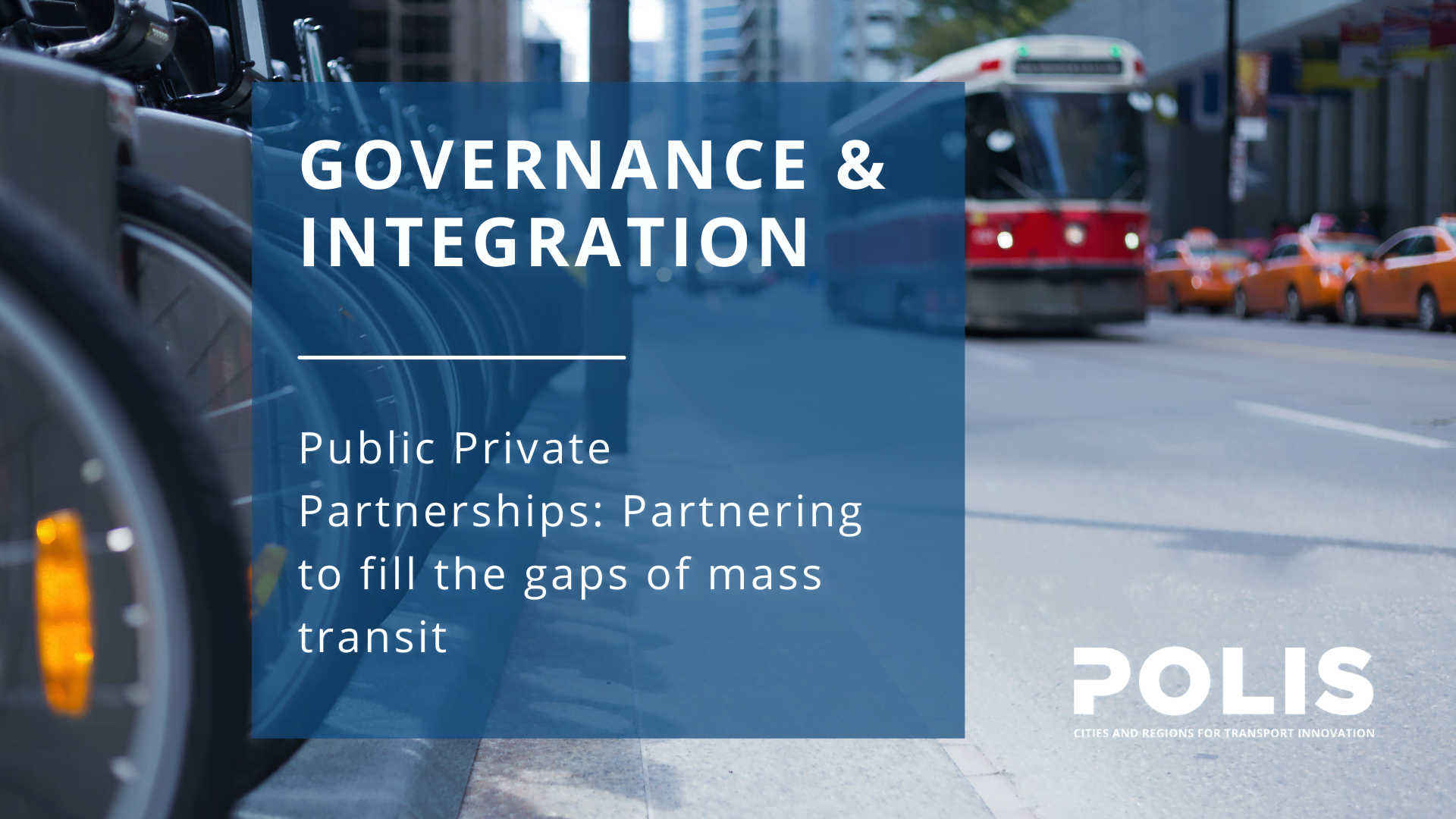Public Private Partnerships: Partnering to fill the gaps of mass transit
The climate science is clear, we have 10 years to pull people out of their private cars and onto new, more sustainable transport services. Failing here is not an option.
On 6 and 7 May 2021 POLIS’ Working Group Governance & Integration met to discuss the role of public-private partnerships for the next generation of urban transport. After exploring regional approaches and data sharing, we turned to shared mobility.
Micromobility has emerged as a solution and is growing across Europe; however, it is by no means a replacement for mass transit. Nonetheless, Public transport networks have suffered greatly during the last year, with reduced usage posing operational challenges for local authorities and operators. As they begin to bounce back, low-density areas and off-peak hours may require tailored solutions, that provide reliable, safe, and affordable options to passengers, and enable public authorities to fulfil their mission in a sustainable way, both financially and environmentally.
It is the million-dollar (or Euro!) question: what is, and can be, the future relationship between micromobility and mass public transport?
As explored in previous sessions, we know private operators have an incredible untapped capacity which, when partnered effectively with local authorities, holds huge potential for future sustainable mobility services. So how do we achieve this, and where are the primary opportunities?
Please mind the gap: Thinking outside of the bus
POLIS seeks innovative solutions by facilitating dialogue between cities, mobility operators and a range of experts across the industry.
To help answer this question POLIS Governance & Integration Working Group turned to leading mobility stakeholders including Spare, NextBike, Uber and Via to discuss how they are filling transport service gaps and helping to stimulate more sustainable urban travel.
System thinking: Beyond merely filling gaps
Car reliance is built into our cities; driven by urban sprawl, induced demand, and erosion of alternative modes. This systematic dependency requires systematic change.
Introducing new services is an essential part, yet success requires individual modal options working together in harmony. The OECD is developing new tools for facilitating such multimodal ecosystems, which being together all mobility actors.
“Our key message is that, instead of partnering to fill the gaps in mass transit, we need to partner to redesign the entire transport system,” said Aimée Agular Jaber and Mariana Mirabile from the OECD.
So, what it the role of technology?
There is no quick fix, fancy gadgets will not free us from big mobility decisions, yet improved technological capacities is critical for enhancing mass transport. And again, you guessed it, partnerships are sure avenues for success.
Chris Snyder from Via and Camila González Arango from Spare presented concrete case studies of where public-private partnerships using Demand Responsive Transport (DRT) technology is driving change and support existing transit services.
Milton Keynes’ bus network: The city needed to address funding gaps, provide accessibility, and integrate with the wider transport system. DRT technology provided a tailored, passenger centric system with new payment systems, intermodal options. The result? A more efficient and sustainable services, with a 50% reduction in subsidy required to operate.
Palma trip brokering: Ridership declined rapidly in response to the COVID-19 pandemic. In response Spare partnered with EMT Palma removed large vehicles from low demand corridors, replacing them with an on demand mixed fleet. Using technology, they created a far more flexible service, increasing and reducing their fleet in direct response to demand and passenger request.
Bridging gaps and building back
Multimodality is critical for lower carbon first and last mile solutions. Car and bike share are both elements bringing citizens away from their individual vehicles. Uber, Nextbike and Dott presented how their services helping to expanding and diversifying transport offerings.
Key outcomes
- A city is the sum of its parts! Building urban multimodality requires focus on inidivual services and how they are connected.
- Tapping into the tech: Private stakeholders have huge potential for using technologies and data, incentivising more sustainable travel. Local authorities can harness these to make public transport more alluring options
- MaaS solutions offer avenues for increasing accessibility. For women and older users this has proved effective in creating improved travel options
The following session was:
- Shared Micromobility: taking stock of the rolling stock
Want to know more about our working groups?
POLIS working groups bring our members together to discuss the leading urban mobility issues, share best practices and debate the way forward. Our Working Group meetings are open to POLIS members only, For more information regarding membership please contact our Membership Manager, Pasquale Cancellara.
